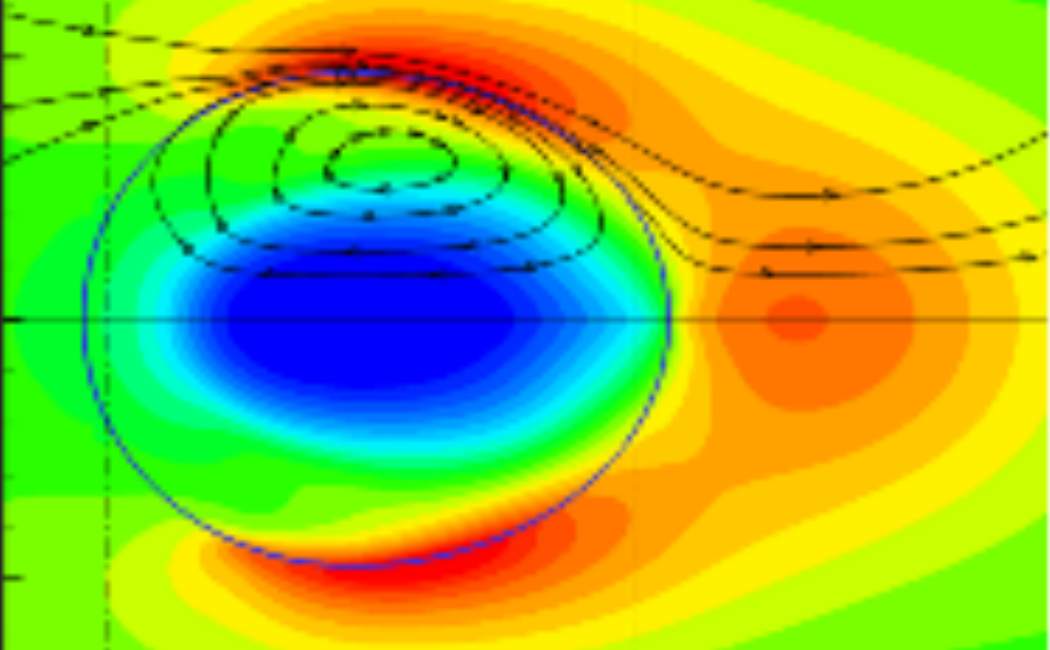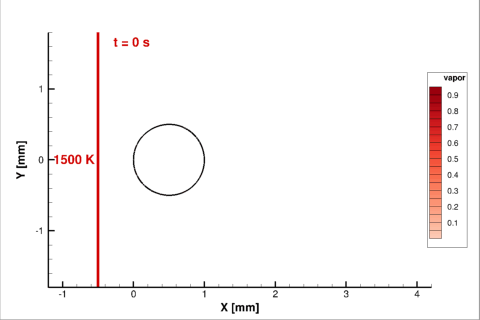


Participants
Jaeheon Sim
The present study attempts to develop an integrated multi-phase and multi-species computational capability including surface tension and evaporation effects and to demonstrate the feasibility of the mechanism of the fuel-vapor jet ejection observed experimentally from an evaporating droplet under micro-gravity conditions. The study is relevant in characterizing spray evaporation behavior in internal combustion engines.
Modeling Approach
An Eulerian-Lagrangian method is implemented for the interfacial dynamics computations including surface tension and evaporation phenomena. The numerical algorithm utilizes the stationary Eulerian grids to describe the flow field, and moving Lagrangian surface meshes to treat the phase boundaries. Temperature-dependent surface tension model and the new local phase change model are employed.
The Marangoni effect due to the temperature-dependent surface tension creates internal flow motion (arrows), promoting the transport of the fuel vapor around the droplet (red isocontours).
Highlights of Results
The localized heating creates a temperature gradient within the droplet. Combined with the temperature-dependent surface tension, this creates internal flow motion, also known as the Marangoni effect, thus developing a convective transport of evaporated fuel vapor around the droplet. A parametric study clearly demonstrated that, at realistic droplet combustion conditions, the Marangoni effect is indeed responsible for the observed phenomena (top), in contrast to the results based on constant surface tension approximation (bottom).

